Summary
Salinity, or excess salt in the soil profile, is often called the "silent killer", because of the devastating effect salinity can have on irrigated agriculture. With increasing agricultural irrigation efficiency, there is a risk of salt build-up in the soil that can significantly reduce crop production. Using a very easy-to-make probe, the Vinduino handheld -designed for soil moisture measurement- can be used to measure and manage soil salinity, as well as monitor irrigation/drinking water quality.
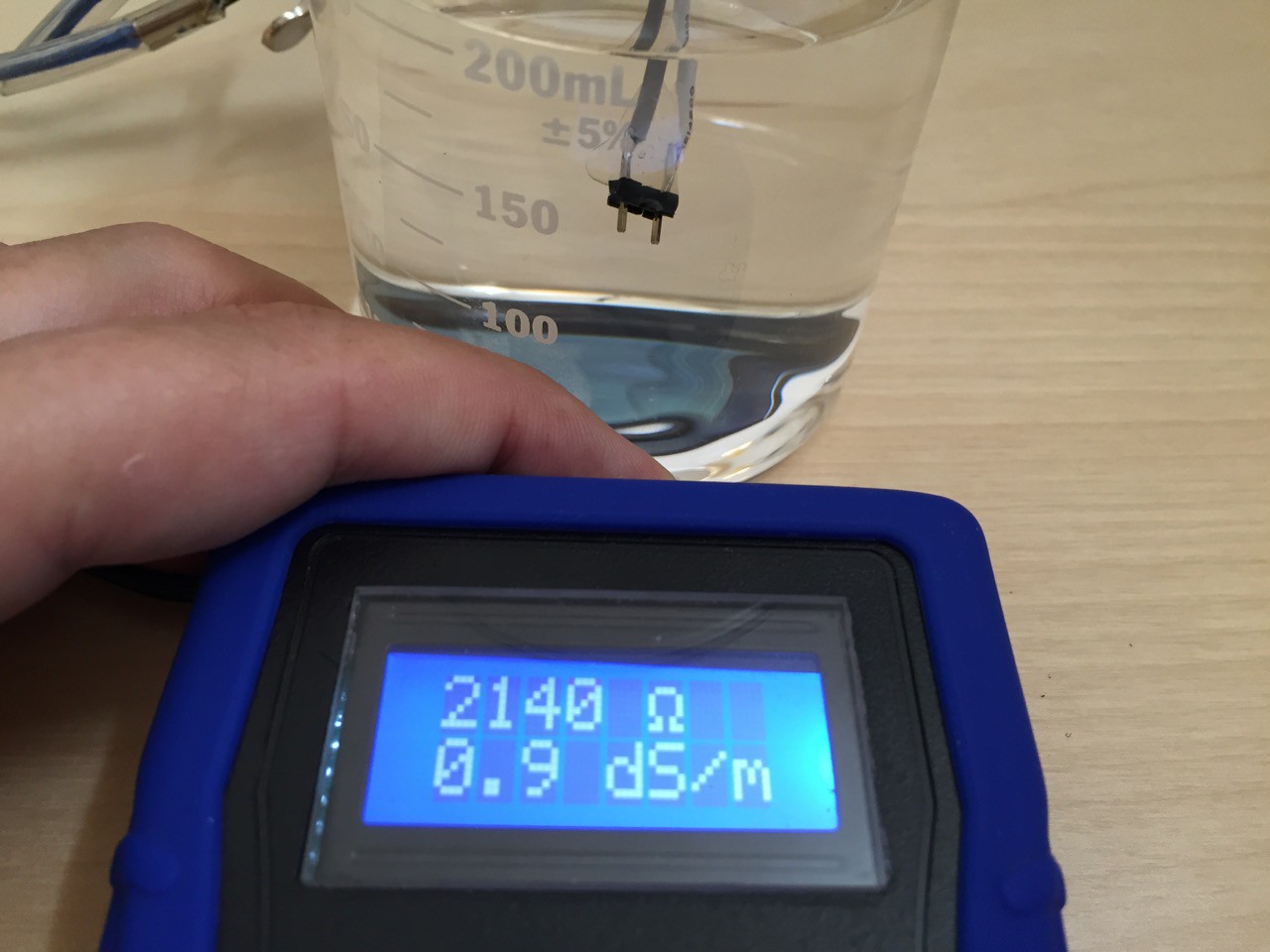
What level of soil salinity is critical?
Salinity is the concentration of salts in soil or water;
when it exceeds a certain level it affects plant growth.
Highly efficient irrigation methods, like the Vinduino project, mean less deep drainage. Reduced drainage is associated with salt build up in the root zone.
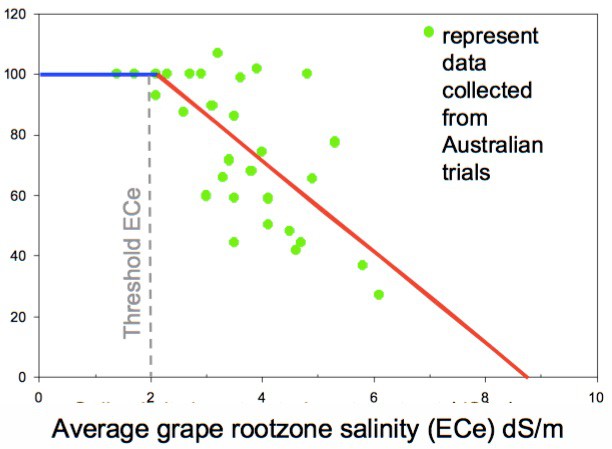
A salinity level of >2 dS/m affects the growth and productivity of wine grapes. Above graph from Australian trials found grape grape production reduces at salinity levels of 2 dS/m and up. At 6 dS/m, production is reduced by 50%.
If the salinity is too high, the only way to remove the salts is to flush out by rain or deep draining irrigation.
Nitrogen fertilizer application can increase salinity and should be monitored closely, especially on sites with potential salinity concerns.
Some crops have a higher tolerance for soil salinity. For example the ECe threshold for wheat is 6.0, for cotton 7.7, and for barley 8.0 dS/m.
Source: "Sustainable Salinity Management on your Vineyard"
http://research.wineaustralia.com/wp-content/uploads/2012/08/Mod3-SalinityMangmtPPT.pdf
http://research.wineaustralia.com/wp-content/uploads/2014/05/Sustainable-Salinity-Management-in-Australian-Vineyards.pdf
Unit for Salinity Measurement
The Standard unit for electrical conductivity (EC) is deci-Siemens/meter (dS/m)
| 1 dS/m | = 100 milliSiemens/meter |
| = 1000 microSiemens/centimeter | |
| = 1000 micromhos/centimeter | |
| = 1000 EC units | |
| = approx 640 milligrams/liter, or ppm total dissolved salts |
To make a calibration solution of 1 dS/m, you can simply dissolve 0.64 grams of table salt (NaCl/ sodium chloride) in one liter of distilled water.
Making and calibrating a Vinduino salinity probe
The Vinduino project already solves the challenges of using electrodes in a conducting medium (water). Electrolysis effects are avoided by alternating the measurement current through the sensor/probe, and keeping the measurement pulses short (25 microseconds). Polarity, or concentration cell, voltage issues are solved in the Vinduino by changing the measurement polarity and averaging out the DC offset. Professional >>$400-class EC meters need much more complex 3- or 4-electrode probes to deal with the polarity issue.
The Vinduino EC measurement probe is an extremely simple 2-electrode device. I used standard gold plated header pins, and electrically isolated the solder connections with glue. The header pins are 0.2" (approx 5 mm) apart, and approx 3 mm length for both electrodes.
When making measurements with any 2-electrode probe, its important to position the probe in the center of the container. Due to field effects, the probe is sensitive to positioning.

To calibrate the probe, make solutions of salt dissolved in distilled water. For a solution of 1 dS/m, use 0.64 grams of salt, for 2 dS/m use 1.28 grams of salt, etc.
I found below values doing a quick calibration, and came up with a curve that is close to the measured values. The Arduino calibration equation for my probe is:
EC = float (pow (Rprobe/1950.0 , 1.0/-0.87));
Please note that the calibration equation varies with probe dimensions, so calibrating your probe is highly recommended. There is no temperature compensation included, assuming all measurements will be done at 25C.
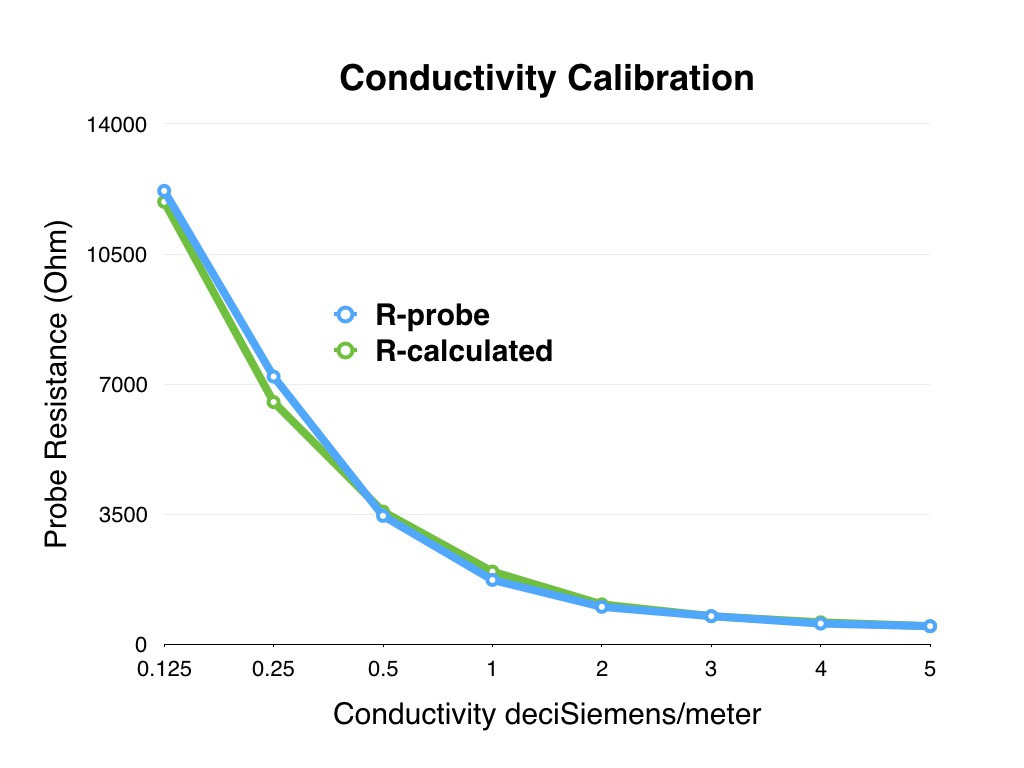
I "punished" the probe for 3 days, operating it in a salt solution of 100dS/m
(about 2 x the salinity of sea water), to see how it would hold up in an aggressive environment, and found some discoloration, no major oxidation. With the levels and frequency I am measuring, this type of probe will likely have longevity.
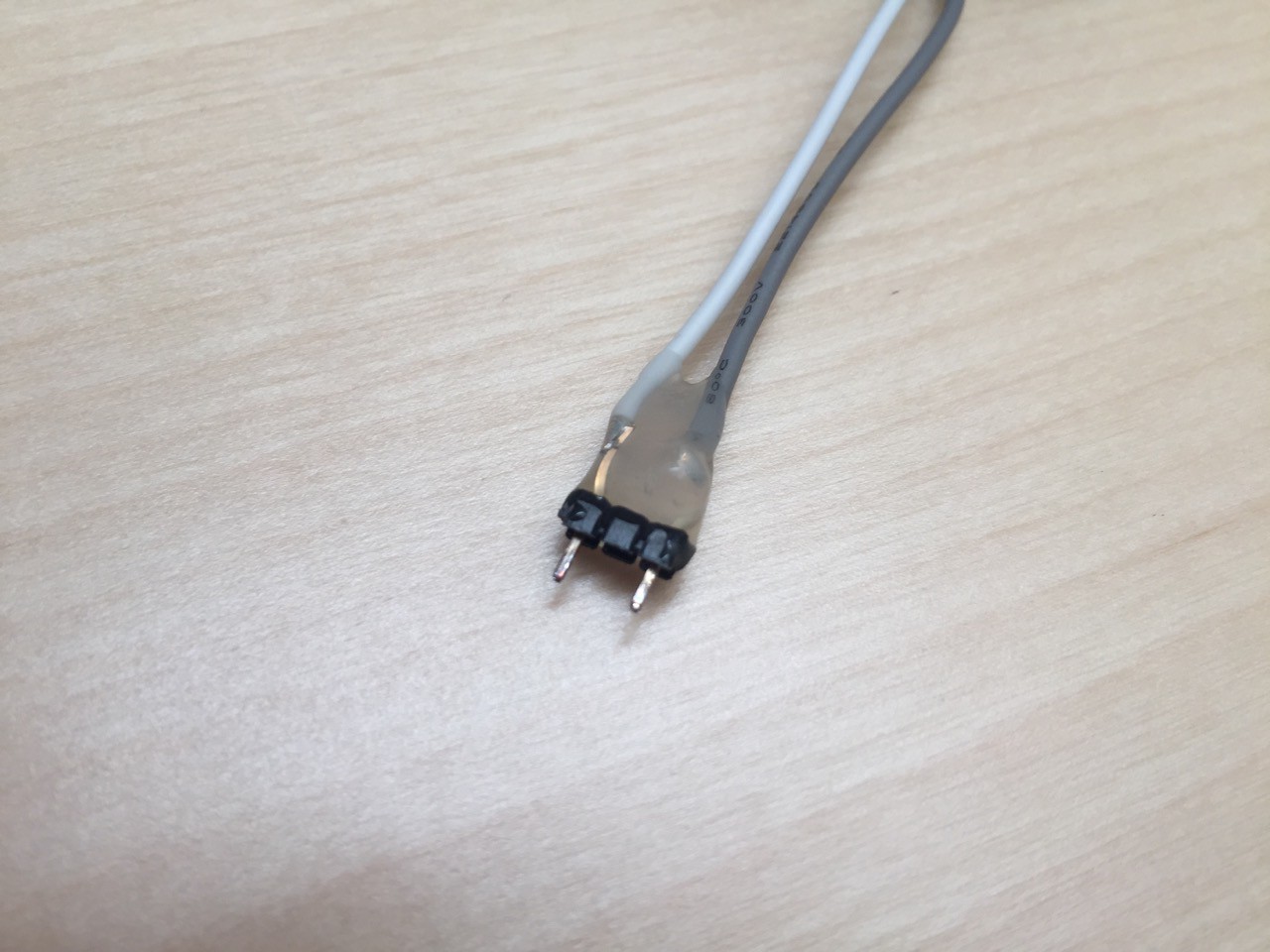
Make the Vinduino handheld conductivity meter
The Vinduino-H PCB is available from OSH Park, http://oshpark.com/shared_projects/QWzdU5S6
Schematics and Arduino sketch is available on Github,
Vinduino
Preparing soil samples
Soil samples need to be collected directly under the dripper, and at different depths representing the root zone. I collected samples at 2, 3, and 3.5 feet.
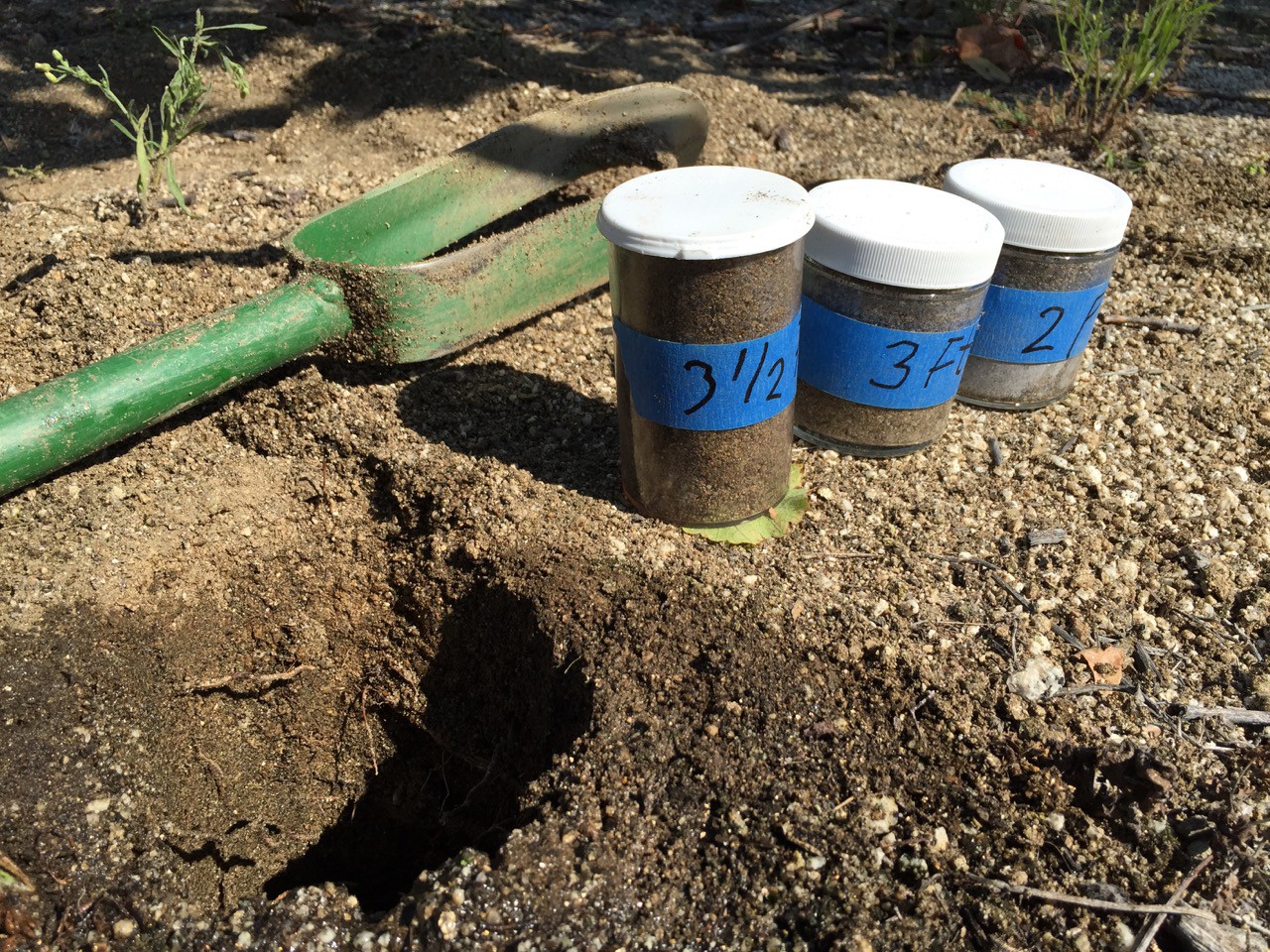
The standard accepted laboratory
method for soil EC testing (ECe) uses a saturated paste
extract (does not need to be adjusted for soil
texture).
An alternative quicker way is the EC1:1 method using a 1:1 soil-water mixture that
must be adjusted for soil texture. Result of both methods cannot be compared directly, that's why for this test, I stayed with the ECe saturated paste method.
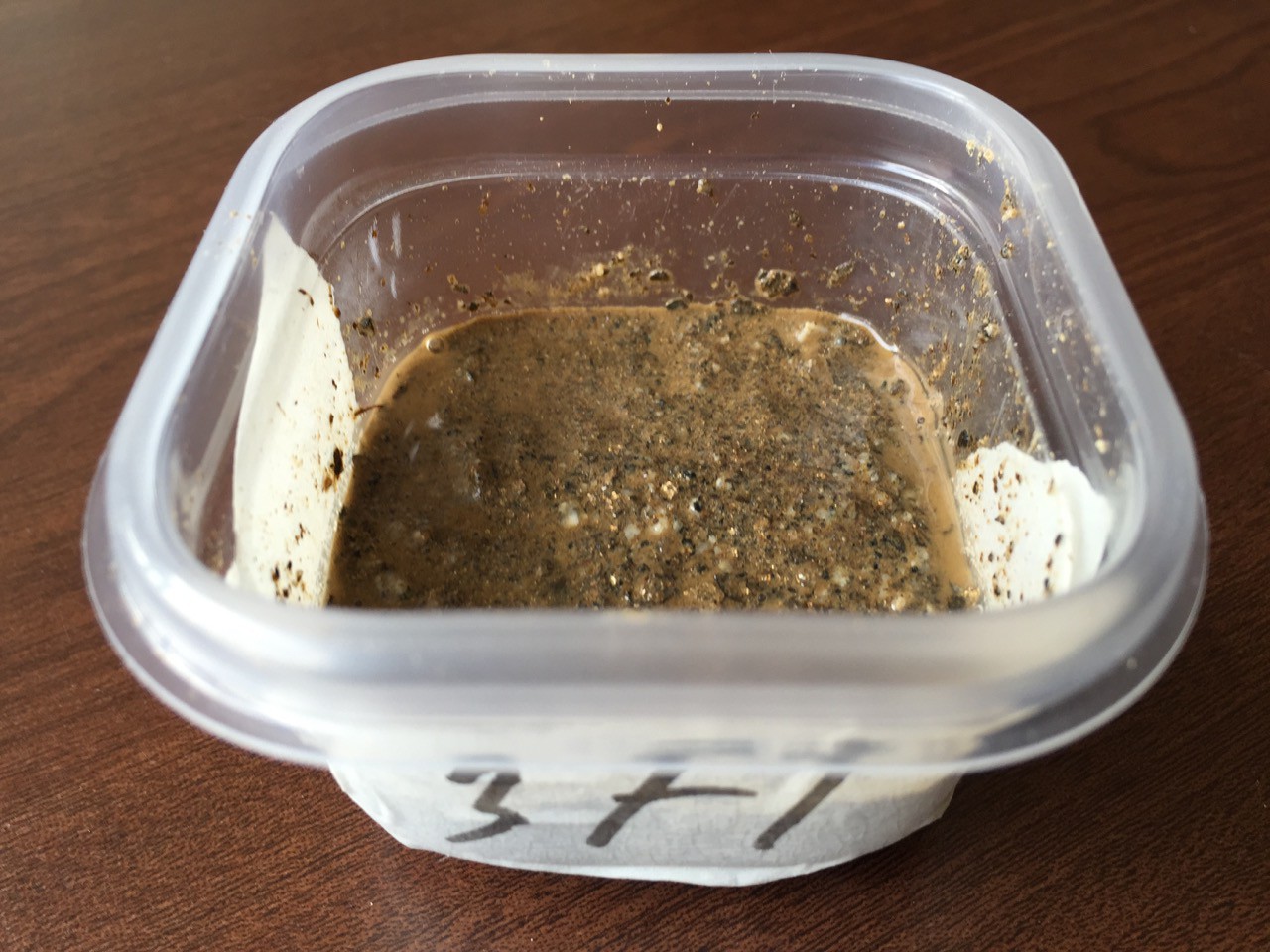
The formal way to make a saturated paste measurement is to oven dry the soil, then add distilled water just enough to saturate. The surface should be shiny at this point. Leave for multiple hours, so also slow dissolving salts are included. Next is to extract the water from the paste, laboratories use vacuum filtering, and measure the electrical conductivity of the extracted water.
Results
| Distilled water | 0.0 dS/m (>1.5 MOhm) |
| Drinking water Temecula (Irrigation) | 0.6 dS/m (max allowed 1.6 dS/m) |
| Drinking water Orange County | 0.9 dS/m (max allowed 1.6 dS/m) |
| ECo vineyard soil at 2 feet | 0.6 dS/m (max allowed 2dS/m) |
| ECo vineyard soil at 3 feet | 0.6 dS/m (max allowed 2dS/m) |
| ECo vineyard soil at 3.5 feet | 0.6 dS/m (max allowed 2dS/m) |
Measuring soil salinity is just one use of EC (electrical conductivity) measurement. While reading up on the subject of EC and wine, I found some other interesting applications for winemaking:
* During fermentation to monitor nutrition level for the yeast
* Cold stability testing of red and white wines
Conclusions
Keeping soil salinity levels low is important for irrigated agriculture.
Using an Arduino micro controller board and a very simple probe, accurate and reproducible water and soil salinity measurements can be made.
Using the described Vinduino project setup, ECo measurement results show soil salinity levels below 2 dS/m, no need for flushing out salts from the vineyard soil this time.
Drinking water levels (0.6 dS/m and 0.9 dS/m) are sufficiently below the legal limit of 1.6 dS/m.
 Reinier van der Lee
Reinier van der Lee
Discussions
Become a Hackaday.io Member
Create an account to leave a comment. Already have an account? Log In.